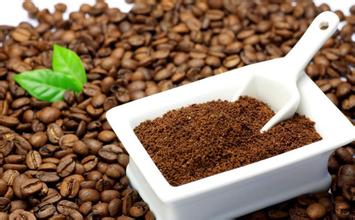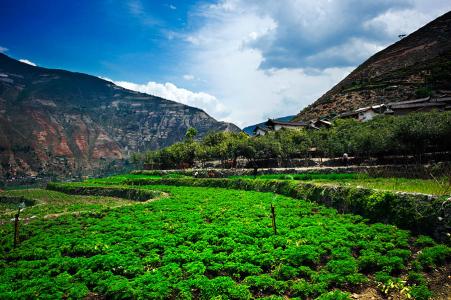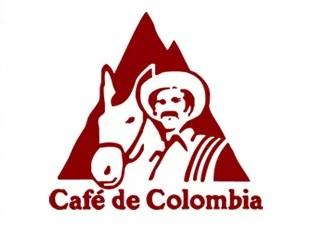A brief introduction to the taste treatment method of the difference between washing and solarization of Kenyan coffee
A brief introduction to the taste treatment method of the difference between washing and solarization of Kenyan coffee
There are two types of coffee farms in Kenya. One is a large plantation that covers an area of more than five acres, but the average elevation is low. In the case of Kenyan coffee, the coffee beans of the large farms are of medium quality. The best Kenyan beans come from small farms, most of which are located in the foothills or volcanic slopes above 5,000 to 6,000 feet. Each small farmer has a capacity of only 20 to 70 bags per season and cannot afford to invest in expensive washing plants, but small farmers are very United. Hundreds or thousands of households are gathered to set up a cooperative farm, which is funded by the government to build a washing treatment plant, and the coffee fruits picked by small farmers are sent to the cooperative farm for unified processing. First remove the half-ripe or rotten fruit, then peel, ferment, decompose the flesh, remove the coffee beans, then dry and polish them.
1 Skin/Pulp: the outermost layer of the coffee bean is covered with berry-like skin and pulp. In addition to the natural sun method, coffee beans treated by other methods must remove the skin and flesh within a few hours after picking. Similar to the cherries we often eat, the difference is that when we eat cherries, we mainly eat the pulp and peel of berries. For coffee, peel and pulp are important by-products. In some places, people use the peel and pulp of coffee to make tea. People in the industry used to call the peel and pulp of coffee "Pulp". The machine used to remove the pulp is called the "desizing machine".
Mucous membrane (Mucilage): under the peel and pulp, a layer of sticky mucus tightly wraps the coffee beans. Because this mucous membrane is extremely sticky and high in sugar, it is used to call it "Honey". Not only coffee, but also many fruits have a layer of mucus inside. You can check the relevant information at http://en.wikipedia.org/wiki/Mucilage.
Parchment (Parchment): inside the mucous membrane, a thin film of cellulose wraps the coffee beans. After drying, the film looks like parchment, hence the name.
The taste spectrum of Kenyan coffee is delicate and elegant, the acidity is bright and changeable, the sweetness and thickness are excellent, and the cleanliness and permeability of Kenyan coffee is better than that of other countries.
Kenyan varieties: mainly SL28, SL34, K7 and Ruirull. Only SL28 and SL34 can drink the sour and charming plum flavor.

Important Notice :
前街咖啡 FrontStreet Coffee has moved to new addredd:
FrontStreet Coffee Address: 315,Donghua East Road,GuangZhou
Tel:020 38364473
- Prev

How to describe the flavor of Danqi Meng coffee beans
How to describe the flavor of Danqi Dream Coffee beans first in the order of spelling and baking, for the flexibility of matching and the control of flavor, as well as the load limitation of my current bean dryer, I choose to bake first and then spell it. I'll have one in the same way. Cooking and blending requires sour and sweet fragrance without losing elegance, as wonderful as my lover's whisper, named Lin's words
- Next

Flavor Description of Colombia Snow Peak Coffee Bean Features Elevation
Colombia Xuefeng Coffee Bean Flavor Description Characteristics Altitude To really understand the flavor changes and product differences of coffee beans is to understand the place of production and growers, different flavors of different estates, or different flavors of different hills in the same estate. The story behind each coffee bean is what Coffee Fragrance wants to know... which plot of land can be traced back to which estate the beans came from, or
Related
- Detailed explanation of Jadeite planting Land in Panamanian Jadeite Manor introduction to the grading system of Jadeite competitive bidding, Red bid, Green bid and Rose Summer
- Story of Coffee planting in Brenka region of Costa Rica Stonehenge Manor anaerobic heavy honey treatment of flavor mouth
- What's on the barrel of Blue Mountain Coffee beans?
- Can American coffee also pull flowers? How to use hot American style to pull out a good-looking pattern?
- Can you make a cold extract with coffee beans? What is the right proportion for cold-extracted coffee formula?
- Indonesian PWN Gold Mandrine Coffee Origin Features Flavor How to Chong? Mandolin coffee is American.
- A brief introduction to the flavor characteristics of Brazilian yellow bourbon coffee beans
- What is the effect of different water quality on the flavor of cold-extracted coffee? What kind of water is best for brewing coffee?
- Why do you think of Rose Summer whenever you mention Panamanian coffee?
- Introduction to the characteristics of authentic blue mountain coffee bean producing areas? What is the CIB Coffee Authority in Jamaica?

